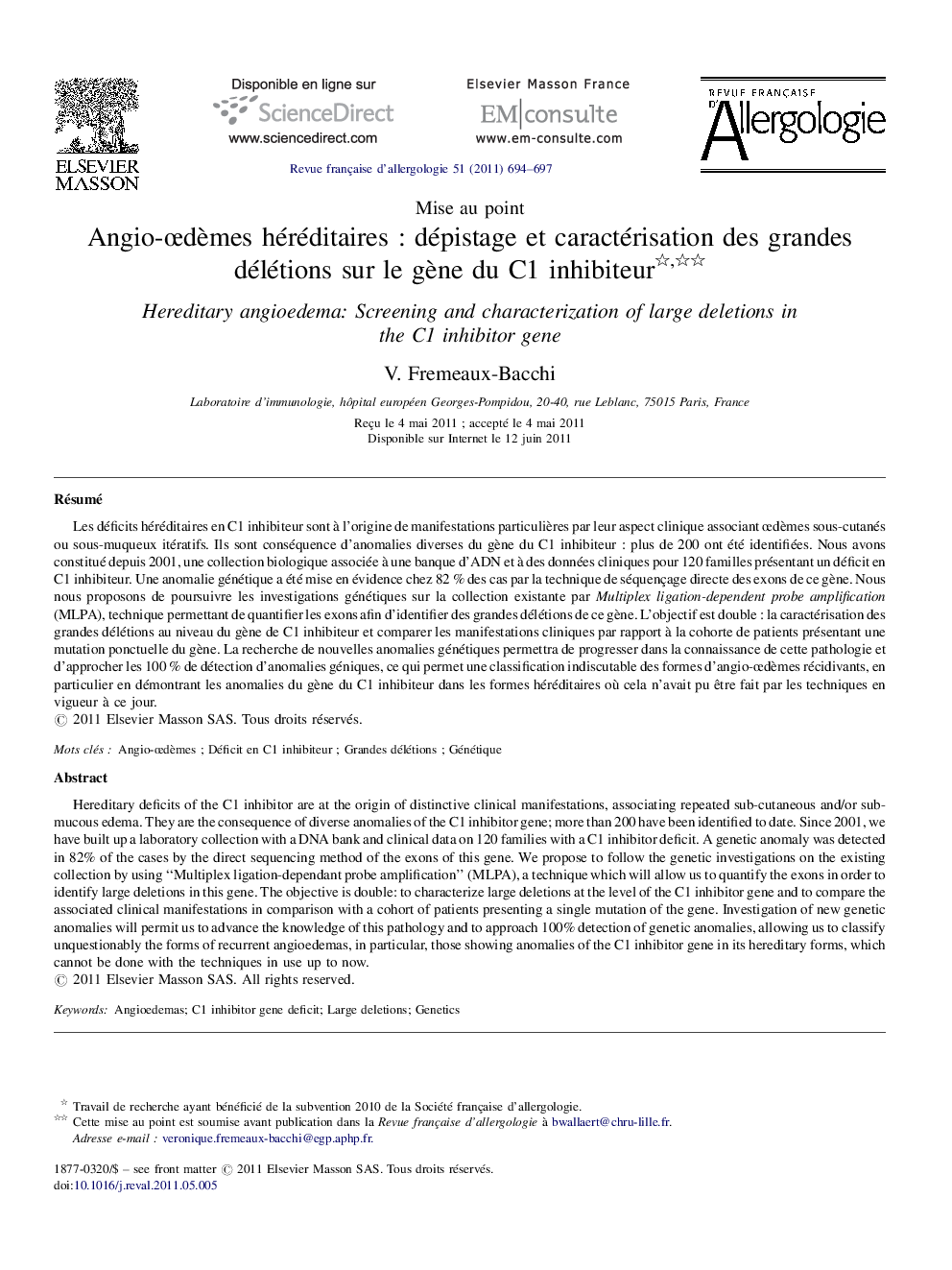| Article ID | Journal | Published Year | Pages | File Type |
|---|---|---|---|---|
| 3386723 | Revue Française d'Allergologie | 2011 | 4 Pages |
Abstract
Hereditary deficits of the C1 inhibitor are at the origin of distinctive clinical manifestations, associating repeated sub-cutaneous and/or sub-mucous edema. They are the consequence of diverse anomalies of the C1 inhibitor gene; more than 200 have been identified to date. Since 2001, we have built up a laboratory collection with a DNA bank and clinical data on 120 families with a C1 inhibitor deficit. A genetic anomaly was detected in 82% of the cases by the direct sequencing method of the exons of this gene. We propose to follow the genetic investigations on the existing collection by using “Multiplex ligation-dependant probe amplification” (MLPA), a technique which will allow us to quantify the exons in order to identify large deletions in this gene. The objective is double: to characterize large deletions at the level of the C1 inhibitor gene and to compare the associated clinical manifestations in comparison with a cohort of patients presenting a single mutation of the gene. Investigation of new genetic anomalies will permit us to advance the knowledge of this pathology and to approach 100% detection of genetic anomalies, allowing us to classify unquestionably the forms of recurrent angioedemas, in particular, those showing anomalies of the C1 inhibitor gene in its hereditary forms, which cannot be done with the techniques in use up to now.
Keywords
Related Topics
Health Sciences
Medicine and Dentistry
Immunology, Allergology and Rheumatology
Authors
V. Fremeaux-Bacchi,
